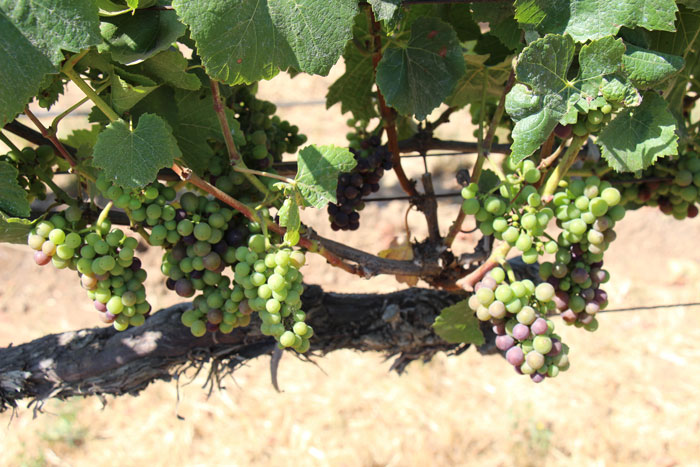
After dozing through much of the year, the spot market for California wine grapes began stirring in late July-early August as growers started bringing in the first fruit from their earliest harvest in years.
Mid-season bunch counts had led many observers to expect another sizeable crop this season following three straight years of unusually high production. That, along with the large acreage of grapes already contracted for sale plus ample inventories of bulk wine, contributed to the lack of buyer interest in purchasing more 2015 grapes.
However, that bunch count may have masked the effects of a long, drawn-out bloom coupled with unfavorable weather for pollination in reducing berry set and sizing, notes Glenn Proctor, a partner with wine and grape brokerage firm, Ciatti Company, San Rafael, Calif.
“Based on early picking in the Central Valley and initial harvesting of sparkling and still wine grapes in coastal areas, this year’s crop appears to be lighter than expected,” he says. “In fact, depending on variety and location, some early-pick growers on the coast are talking about their production being down as much as 30 percent from last year. I don’t think yields in the Central Valley are down as far.”
However, he suggests viewing any reductions in perspective, given the historically high production of the last three years. Some growers are saying this year’s crop could be more like “historical normal” in size.
Even a lighter-than-usual crop wouldn’t necessarily be a disappointment over the long term. As Proctor points out, drawing on the record high 26 million gallons inventory of bulk wine listed at Ciatti Company to make up for any shortfall in this year’s production would help strengthen the industry by bringing grape supply and demand more in balance.
Many growers are reporting this year’s crop is maturing a week or two earlier than last year. And that crop, itself, was several weeks earlier than normal, Proctor notes.
“Even though it’s definitely an early crop, it’s inconsistent,” he says. “Some growers have a better crop than others. Several sparkling wine growers have told me they’ve never started harvesting their vines as early as they did this year. One of them expected to be done by Aug. 27.”
Initial results from the 2015 harvest have been driving recent spot market sales of Pinot Noir, Chardonnay and Sauvignon Blanc, varieties which had been languishing in the market since spring, Proctor reports.
“In some areas of the coast, we’re even seeing some activity in Merlot,” he says. “Up until now that variety has been hard to sell, either as grapes or as bulk wine, this year” he says.
In the meantime, spot market demand for North Coast Cabernet Sauvignon grapes continues relatively strong, as it has been throughout this year, Proctor adds.
While buyer interest in unsold 2015 grapes has picked up lately, deals are being made to this point at prices below average District contract prices, he notes.
“We’re still trying to understand how the current market is changing,” Proctor says. “The harvest is still in the early stages, and potential buyers may be waiting to get a better picture of the crop size. If it turns out to be light, I expect some wineries will come back into the market and try to pick up some grapes. Also, growers with a short crop may be using some of their unsold grapes to fulfill their contracts. We’ll know more by the end of August.”
Increased sales of coastal case good wines priced at $10 and higher in the past few years, should help bolster spot market prices for this year’s grapes, he notes. However, prospects are less promising for growers in the Central Valley. There the demand for wines priced below $10 a bottle has been stagnant and bulk supplies of these wines remain high.
“It is still difficult to sell grapes in the Valley,” Proctor says. “We’re likely to see spot market prices there below what growers would like.”
About the Author(s)
You May Also Like




